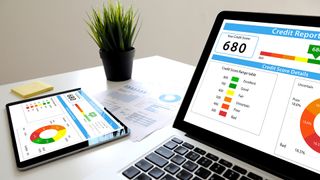When you take out a personal loan, mortgage, auto loan or any other kind of fixed credit agreement, you’ll be expected to repay the full amount over a set period of time, plus a bit extra known as interest. It’s the rate of interest that can determine how good value (or otherwise) the loan is and whether or not it will work for you, so before you sign on the dotted line, here we take a look at how loan interest is calculated so you know what to expect. We recommend reading this especially if you're considering a risky payday loan.
What is interest?
Interest is the amount you’ll be charged for borrowing money from a lender. It’s to account both for the risk they’re taking by lending to you, and to ensure they’re paid for their services. Essentially, it’s how they make a profit. They’re lending money to you on the expectation that they’ll get it back with an extra chunk on top, so you might take out a $15,000 loan, but will pay back a total of $17,000, with the extra $2,000 being the interest.
This means you’re not only repaying what you borrowed, and need to factor this into any calculation. You’ll typically be expected to repay the loan amount plus interest in monthly installments, with each payment being split between the principal (the amount you borrowed) and the interest costs. Note that this is only in the case of amortizing loans; some other types of loan are interest-only (which is where you only pay the interest in the early years of the loan, not the principal, and are more common in the mortgage market), while credit card loans act more as a revolving line of credit rather than a standard loan, and repayments can fluctuate accordingly.

What interest rate will I be charged on a personal loan?
The amount of interest you’ll be charged will depend on a number of different factors, with your credit history being key. The lower your credit score, the riskier a borrower you’re deemed to be and, in the eyes of lenders, the less likely you are to repay the money, and so the interest rate will be higher. Conversely, a higher credit score will equate to a lower interest rate, and lower repayments accordingly.
Yet there’s more to it than that. Your income will also come into it, as will your current amount of debt – your debt-to-income ratio is key, as it indicates whether or not you can comfortably take on another payment – and the amount of money you’re looking to borrow and over what term will also have a part to play. The lender you choose will affect your interest rate too, so it’s important to find the best auto loan or personal loan providers who can accommodate. Ultimately, the amount you’re charged will be at the discretion of the lender, who will have their own criteria when it comes to determining interest rates.
How is interest calculated?
If your lender opts for the simple interest method, it’s relatively easy to see how much interest you’ll be paying. The formula is thus: Principal x Interest rate x Time = Interest. So, if you’re taking out a $15,000 loan over a five-year term at an interest rate of 4% per year, you’ll be paying $3,000 in interest ($15,000 x 0.04 x 5 = $3,000).
However, calculating loan interest – particularly if you want to work out how much interest you’ll be paying each month – is often more complicated than this, with a lot of lenders opting for a process known as amortization instead.
The amortization formula is used to create a bespoke payment schedule that’s based on the loan amount, the term and the interest rate, with each payment broken down into principal and interest repayment. Crucially, the way your repayments are broken down will change over time – more of your monthly repayment will go towards paying the interest in the early days and less towards the principal, whereas this will reverse over the years, with interest charges reducing and more of the principal being repaid. No matter what, though, your loan will be fully amortized – in other words, fully repaid – by the end of the schedule.
However, the formula is a complex one, and it may be best to use an amortization calculator so you can see exactly how much interest you’ll pay and when you’ll be paying it. This could also be a good way to see how different loan amounts and terms may be better for you in terms of the amount you’ll have to repay each month, so you can begin to determine whether or not the loan you’re looking for will actually be affordable. Remember too that a higher interest rate equals higher repayments, which is when some people may find it difficult to keep within the terms of their credit agreements, and is why it’s so important to get the lowest rates possible.

How can I get the best interest rate?
The best way to ensure your loan repayments stay within your budget is to get the best interest rate, and a lot of that will come down to your credit score. If yours has room for improvement, now could be a great time to seek the best credit repair services – doing so can boost your chances of securing the finance you need at a rate that works for you, thereby ensuring that the interest, and therefore your repayments, remain affordable.

